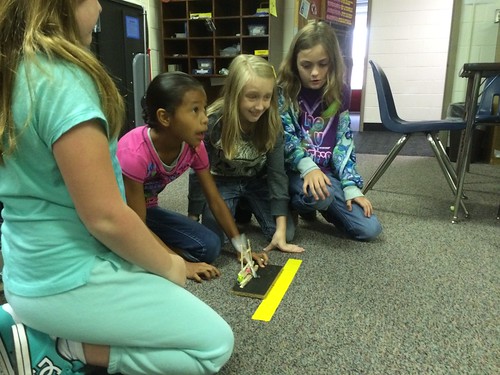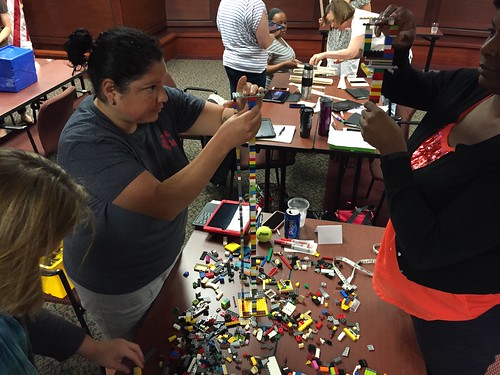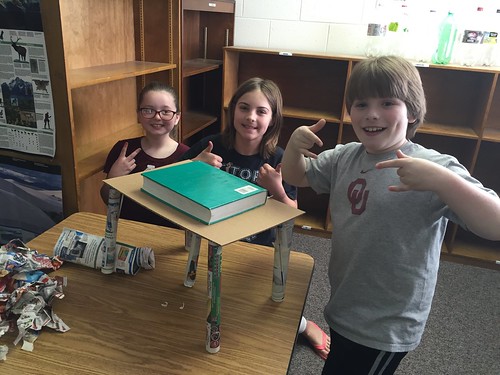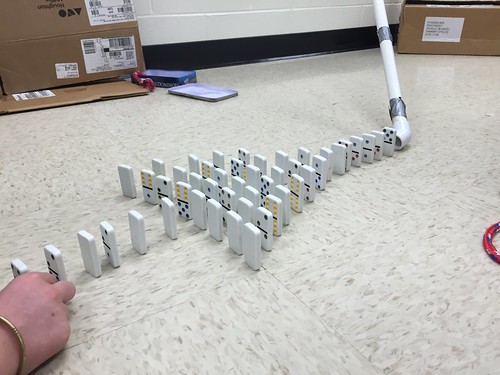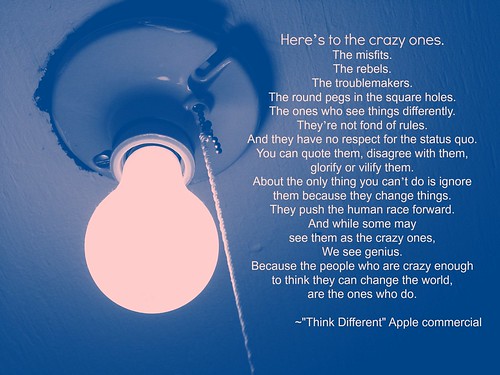As this fall semester has started, I’ve heard several stories about STEM classes and STEM teachers in other schools that have troubled me deeply. Some paraphrased quotations from new, full-time STEM teachers, have included:
I’m going to teach some math lessons, and then we are going to do some hands-on science experiments. Later in the semester we are going to do some technology projects.
Another one was:
I hope I can mainly teach my STEM classes this year in whole group settings.
Statements like these almost break my heart, because they reveal fundamental misperceptions about what “STEM learning” can and should be.
True STEM classes, which are NOT “regular” science or math classes in which teachers have been asked or have chosen to offer STEM-focused lessons to students, are very rare today in most schools. I was blessed the past two years to teach STEM to 4th and 5th grade students as a separate “specials class” where STEM was treated like PE, Music and Art. All students went to STEM class. It wasn’t reserved just for the GE/Gifted Education kids. Everyone went to STEM and participated, including many “special friends” who were not mainstreamed for other classes during the day. They went to STEM class, however, because they could succeed in collaborative environments which emphasized hands-on learning.
By and large, my students LOVED STEM. STEM was for us, and should be in every school, a very integrated, hands-on, context-rich learning environment filled with making, tinkering, building, testing, collaborating, playing, and sharing. Students regularly developed their literacy and communication skills, learned about science, tested hypotheses, developed their digital literacy / technology skills, and applied design skills to the construction of real objects in lessons.
As teachers, it can be difficult for us to have a vision of learning and school-based education which extends outside our own experiences as students. We are used to siloed learning in different content areas. “Close your math book now, it’s time for science.” Or, “put away you reading log, now it’s time for social studies.” Siloed, de-contextualized learning for separate grades in the gradebook tends to be the rule rather than the exception in most classrooms in 2015. That is the way of traditional school learning, but it is not the pathway for the STEM teacher and the STEM student.
Common misperceptions about what STEM learning can and should be make me more convinced than ever that multi-day, professional development learning events like iPad Media Camp and STEMseeds PD Camp are vital. They both offer opportunities for teachers to be STUDENTS in immersed, blended learning environments which embody transformative pedagogies of students as collaborators, makers, content creators, curious explorers and expert learners.
STEM learning activities should involve hands-on building projects. Students should be tinkering and making. My favorite STEM projects from the past two years (thanks to my amazing and generous partner STEM teacher, Amy Loeffelholz (@AmyLoeffelholz) were building and testing catapults, engaging in a variety of engineering design projects, collaboratively building in MinecraftEDU, building and testing prosthetic hands, learning about the science of kitchen chemistry, building and launching water bottle rockets, learning about circuits through experimentation with a Makey Makey, and iteratively building Rube Goldberg projects in our Maker Studio. THAT is STEM, not “teaching a math lesson today,” “a science lesson next week” and “a technology project later in the year.”
This year at my new school, where I am the Director of Technology, faculty have read “Mindset: The New Psychology of Success” by Carol Dweck. Carol’s primary thesis is a good one, but I also agree with Alfie Kohn‘s (@alfiekohn) points in his critical article, “The perils of “Growth Mindset” education: Why we’re trying to fix our kids when we should be fixing the system.” Yes we need to be wary of praising students for their performance rather than their EFFORT and PERSISTENCE. Yes, grit is important and valuable. We need to simultaneously recognize, however, that we need to all question WHY we are learning within traditional structures and schedules. Just because we have “traditionally done learning” this way does not mean we should continue to structure and impose mandates for educational activities in that way.
One of the reasons I’ve become a more ardent advocate and passionate supporter of STEM and STEAM learning in the past two years is because its pedagogy of learning challenges the traditional, siloed approach of in-school learning. Outside of school, we rarely pause to ask ourselves, “Wait! Am I doing math now? Am I doing science now? Am I doing technology? Is this engineering?”
In the world outside traditional classrooms, we use our knowledge and skills from different “formal content areas” in integrated ways. We work together to find resources, explore alternatives, and solve problems. In STEM class, we can and should have opportunities to similarly develop and apply our skills in science, technology, engineering and math within real world contexts. We should make stuff. We should explore as curious inventors and problem solvers.
When I hear stories about STEM teachers wanting to mainly teach students in whole group settings, rather than through collaborative, center-based activities, or STEM teachers wanting to maintain an artificial separation of content area skills through isolated rather than integrated activities, it gives my heart fuel to continue working as a change agent in teacher professional development. These stories energize me to try and model different, hands-on, truly learner-centered approaches to professional development like those I’ve helped develop via STEMseeds Camp and iPad Media Camp. Rather than cast my hands up in dispair, I’m motivated to keep collaborating with other passionate educators who have a DIFFERENT view of student learning and classroom education. I’m inspired to keep thinking different. Because in case you haven’t figured it out yet, I’m one of the “crazy ones.” I believe “…the people who are crazy enough to think they can change the world, are the ones that do.”
Bring on the learning revolution.
This article has been cross-posted to Medium.com as the post, “STEM Learning: It’s for the CRAZY Ones.”
If you enjoyed this post and found it useful, subscribe to Wes’ free newsletter. Check out Wes’ video tutorial library, “Playing with Media.” Information about more ways to learn with Dr. Wesley Fryer are available on wesfryer.com/after.
On this day..
- Options for Classroom Blogging (August 2019) – 2019
- Web-based Video Editing with WeVideo (Including Green Screen) – 2017
- Developing & Writing a Pitch for your Book – 2015
- Reconsider Your Neutral Brainstorming Assumptions – 2012
- Inspired by Angela Maiers #blc10 presentation: Writing for Real – 2010
- Legal Fight Over Publicly funded Charter Schools and Online Education in Oklahoma – 2010
- So many CMS options: Why I mainly invest in WordPress and Google Sites – 2009
- Good del.icio.us and Google Notebook how-to guides – 2007
- iPhoto 08 First Impressions – 2007
- From Webkinz and Avatar to Sitting in a desk – 2007

